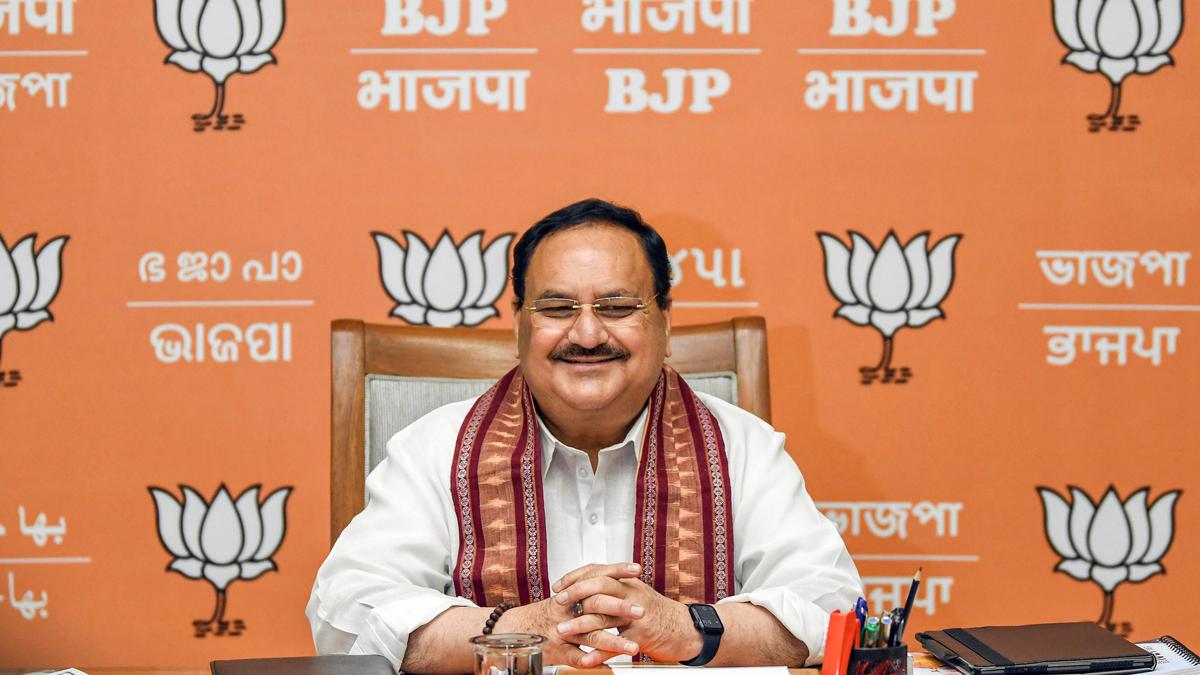
BJP’s national president Nadda to flag off second Parivartan Yatra in poll-bound Chhattisgarh
The Hindu
Three days after rolling out its first ‘Parivartan Yatra’ from south Chhattisgarh, the BJP will kick-start the second such mass-contact programme from the northern part of the State on September 15.
Three days after rolling out its first ‘Parivartan Yatra’ from south Chhattisgarh, the BJP will kick-start the second such mass-contact programme from the northern part of the State on September 15, intensifying its campaign against the ruling Congress ahead of the upcoming Assembly polls.
“BJP national president J.P. Nadda will flag off the Parivartan Yatra (March of Change) from Jashpur district after offering prayers at Balaji temple in Jashpur town,” a party functionary said.
“The BJP chief will take off in a helicopter from Birsa Munda airport, Ranchi, in neighbouring Jharkhand at 10.10 a.m. and will land at the Police Ground helipad in Jashpur at 11 a.m.,” the party’s State spokesperson Nalineesh Thokne said.
“Nadda will offer rituals at the Balaji temple in Jashpur at 12 noon and then address a public meeting at Ranjita stadium ground before flagging off the yatra,” he said.
The yatra starts a day after Prime Minister Narendra Modi addressed a ‘Vijay Sankhnad’ rally in Raigarh district and targeted the Bhupesh Baghel-led Congress government in the State, saying it lagged behind in the welfare of the poor, but was ahead in corruption. Assembly elections in Chhattisgarh are due in November.
“On September 12, the BJP took out its first Parivartan Yatra from Dantewada district. Union Home Minister Amit Shah was scheduled to flag off the first yatra but he could not attend the event due to some urgent reason,” party leaders had said.

“Writing, in general, is a very solitary process,” says Yauvanika Chopra, Associate Director at The New India Foundation (NIF), which, earlier this year, announced the 12th edition of its NIF Book Fellowships for research and scholarship about Indian history after Independence. While authors, in general, are built for it, it can still get very lonely, says Chopra, pointing out that the fellowship’s community support is as valuable as the monetary benefits it offers. “There is a solid community of NIF fellows, trustees, language experts, jury members, all of whom are incredibly competent,” she says. “They really help make authors feel supported from manuscript to publication, so you never feel like you’re struggling through isolation.”

Several principals of government and private schools in Delhi on Tuesday said the Directorate of Education (DoE) circular from a day earlier, directing schools to conduct classes in ‘hybrid’ mode, had caused confusion regarding day-to-day operations as they did not know how many students would return to school from Wednesday and how would teachers instruct in two modes — online and in person — at once. The DoE circular on Monday had also stated that the option to “exercise online mode of education, wherever available, shall vest with the students and their guardians”. Several schoolteachers also expressed confusion regarding the DoE order. A government schoolteacher said he was unsure of how to cope with the resumption of physical classes, given that the order directing government offices to ensure that 50% of the employees work from home is still in place. On Monday, the Commission for Air Quality Management in the National Capital Region and Adjoining Areas (CAQM) had, on the orders of the Supreme Court, directed schools in Delhi-NCR to shift classes to the hybrid mode, following which the DoE had issued the circular. The court had urged the Centre’s pollution watchdog to consider restarting physical classes due to many students missing out on the mid-day meals and lacking the necessary means to attend classes online. The CAQM had, on November 20, asked schools in Delhi-NCR to shift to the online mode of teaching.









